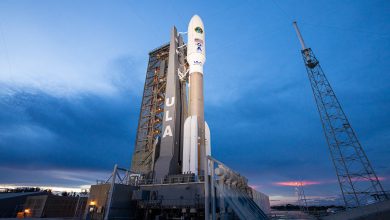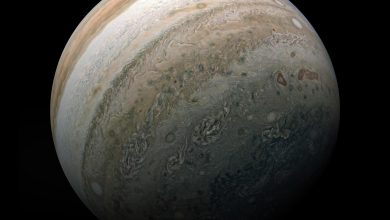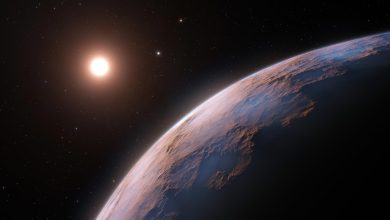Latest Articles
-
Feb- 2022 -14 FebruarySpace Force

ULA’s Atlas V launches satellite-inspection mission for Space Force
Lead Image: The Atlas V is a “workhorse” for the military. Image Credit: Walter Scriptunas II United Launch Alliance carried out an Atlas V launch Friday with the third pair of GSSAP satellites for the US Space Force. Flying in its never-before-used 511 configuration, Atlas lifted off from Cape Canaveral Space Force Station at 2:00 PM EST (19:00 UTC) for a lengthy mission that injected the satellites into a near-geostationary orbit. The GSSAP (Geosynchronous Space Situational Awareness Program) is a US Space Force project using small satellites to inspect other spacecraft operating in geostationary orbit. Friday’s launch, which is designated…
Read More » -
14 FebruaryClimate Change

How Climate Restoration Could be the Key to Stopping Climate Change
Lead Image: Our world is a pale blue dot, and we have just one world to live in. We should take care of her and she will do the same. Image Credit: NASA. The world today faces a mounting environmental crisis. Rising levels of CO2 are leading to global warming, the acidification of our oceans, and the destruction of ecosystems worldwide. Worse yet, these changes have led to feedback mechanisms that are making the situation worse. In short, Climate Change constitutes an existential threat that demands action. The extent of Climate Change and the dangers it poses are regularly cataloged…
Read More » -
13 FebruaryAstronomy

HERA Telescope: Early Findings Promise Deeper Understanding of the Cosmic Dawn
Scientists including MIT’s Jacqueline Hewitt and Nicholas Kern share long-awaited results, getting closer to the universe’s first stars. All through history, humans have created and shared stories that ponder the creation of stars — what they are and how the first stars came to be. Now, with new results from the Hydrogen Epoch of Reionization Array (HERA), a radio telescope located at the South Africa Karoo Astronomy Reserve, MIT scientists are one small, but significant, step closer to understanding that history. HERA researchers are looking for the earliest signs of star formation and galaxy structure. Specifically, scientists including Jacqueline Hewitt,…
Read More » -
12 FebruaryNASA

NASA’s NuSTAR Spots Highest-Energy Light Ever Detected From Jupiter – And Solves a Decades-Old Mystery
Lead Image: Jupiter’s southern hemisphere is shown in this image from NASA’s Juno mission. New observations by NASA’s NuSTAR reveal that auroras near both the planet’s poles emit high-energy X-rays, which are produced when accelerated particles collide with Jupiter’s atmosphere. Credit: Enhanced image by Kevin M. Gill (CC-BY) based on images provided courtesy of NASA/JPL-Caltech/SwRI/MSSS The planet’s auroras are known to produce low-energy X-ray light. A new study finally reveals higher-frequency X-rays and explains why they eluded another mission 30 years ago. Scientists have been studying Jupiter up close since the 1970s, but the gas giant is still full of…
Read More » -
11 FebruaryAstronomy

New Planet Detected Nearby – Orbiting Around Star Closest to the Sun
Lead Image: This artist’s impression shows a close-up view of Proxima d, a planet candidate recently found orbiting the red dwarf star Proxima Centauri, the closest star to the Solar System. The planet is believed to be rocky and to have a mass about a quarter that of Earth. Two other planets known to orbit Proxima Centauri are visible in the image too: Proxima b, a planet with about the same mass as Earth that orbits the star every 11 days and is within the habitable zone, and candidate Proxima c, which is on a longer five-year orbit around the…
Read More »










